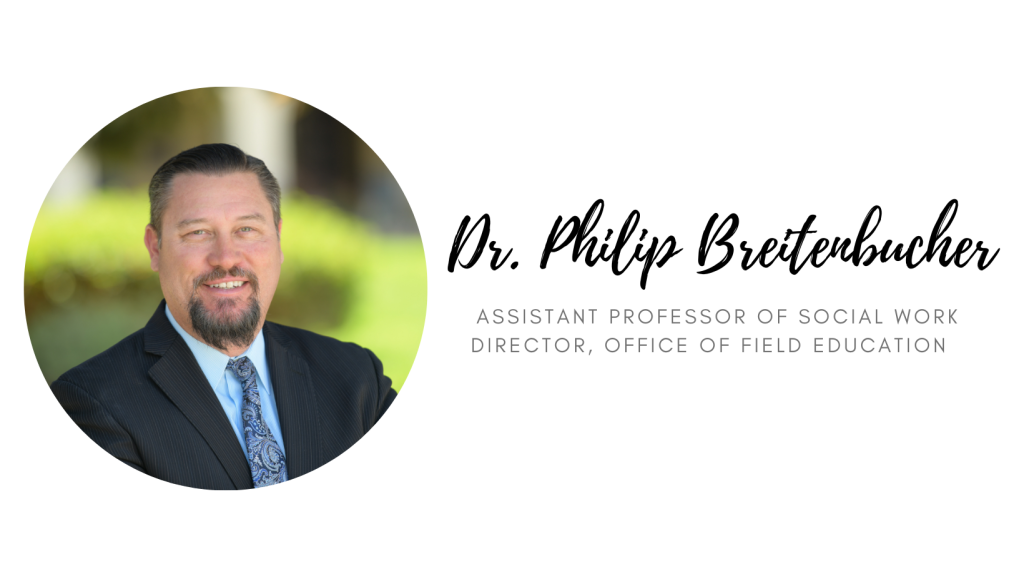Using Collective Leadership to Improve Outcomes for Pregnant Women

Treating pregnant women with opioid use and other mental health disorders can be complicated. The research is detailed; unfortunately, the stigma towards pregnant women remains high. According to a study out of Vanderbilt University, pregnant women are 20% more likely to be denied medication-assisted therapy than non-pregnant women (Patrick, S., 2020). Effective treatment requires a coordinated response across multiple systems at both practice and policy levels. On October 17, 2020, I presented at the National Association of Social Workers, California Chapter (NASW-CA) annual conference along with Dr. Kendra Flores-Carter D.S.W. on applying research-based practices for the care of pregnant women. In the session, we discussed prevalence rates of pregnant women struggling with substance use and mental health disorders and federal legislation (Comprehensive Addiction Reform Act, 2016) requiring a coordinated response. The session concluded with strategies for reducing the stigma that creates barriers to accessible and effective treatment, cultural humility, and research-based treatment interventions.

The National Center on Substance Abuse and Child Welfare recommends a five-point prevention and intervention framework to identify and treat pregnant women with substance use disorders. Communities seeking to implement the five-point framework hope to improve the baby and mother’s health outcomes, reduce stigma related to substance use and mental health disorders, and improve treatment access and engagement. Effectively implementing the five-point framework requires multiple agencies from different academic disciplines to work together for effective outcomes. The literature has lots to say about collaborative teams and the importance of strategically developing, managing, and leading effective teams (Hickman, 2016). The research mainly focuses on collaborative teams within a single organization/agency where the team members work towards the same goal. Treating pregnant women with substance use and mental health disorders require obstetricians, substance use counselors, mental health professionals, and child welfare social workers to come together to form a common goal. The challenge is that each of these professionals come from a unique/distinct organization with its own purposes. They each view the client differently. They each speak a unique language, further complicated because each of their funding streams comes from different sources.

Collective leadership allows teams to move beyond one agency/system’s individual goals and shift to the collective outcomes celebrating the accomplishment of the collective. Hickman (2016) describes collective leadership outcomes as having a clear direction, alignment, and commitment (D.A.C.) within the collaborative group. Leading a multi-agency team with diverse training, specializations, talents, and attributes, such as the team needed to effectively treat pregnant women, requires expanding leadership development. The collective must come together and agree on the direction it’s seeking to achieve. There must be alignment in the activities and services provided, and there must be a commitment to the collective’s success. Thus, the collective leader must emphasize the values, principles, and practices of the collaborative to produce D.A.C., engage in boundary-spanning and manage the social networks that connect the individuals within the collective (Hickman, 2016).

The first step in the process for creating D.A.C. isn’t to bring the teams together to define the direction or to understand collective beliefs. The collaborative leadership process’s first step is to work with individual teams (organizations, agencies, or systems) separately to clarify and define the differences. Each group describes and articulates their specific strengths in treating pregnant women. They describe their weaknesses or gaps and communicate the outcomes they hope to accomplish through the collective work. Only once each group has been able to define themselves the groups/teams are brought together to share their strengths, weaknesses, and vision. This process of self-reflection reduces insecurities. The individual groups’ members begin to see how their strengths offset the other teams’ disadvantages and vice versa. In practice, there is often a tendency to want to jump right into developing a shared vision/mission, but this can lead to divineness and tension amongst agencies. However, suppose agencies are allowed the time and opportunity to define themselves first and understand where there is alignment between agencies. In that case, they can then move to the second step of finding common ground. With common ground established, the collective can develop a shared vision that will provide a clear direction. With clear direction and alignment, the collective can develop personal commitments to create unity through collaboration, identify shared outcomes/measurements of success, and then develop plans to manage challenges or barriers that may impede the collective’s success.

The practice of collective leadership can be challenging and requires skillful facilitation. Treating pregnant women with substance use and mental health disorders is complex and requires professionals from multiple agencies to work together effectively. Using a collective leadership developmental approach to form these highly diversified teams could lead to better outcomes for women and, ultimately, their infants. It is hoped that this article will encourage discussion amongst practitioners to find new ways of working together for better results for all.

About the Author:
Philip Breitenbucher has over 20 years of progressively responsible experience in managing public child welfare and community-based prevention services. Professor Breitenbucher currently serves as an assistant professor of social work in the Department of Social Work, College of Behavioral and Social Sciences at California Baptist University. Also, Professor Breitenbucher serves as a research associate for the Center for the Study of Human Behavior. Mr. Breitenbucher is currently pursuing an educational doctorate in Organizational Leadership.
References:
Hickman, G.R. (2016). Leading organizations: Perspective for a new era (3rded.). Sage
Patrick SW, Barfield WD, Poindexter BB, AAP Committee on fetus and newborn, Committee on substance use and prevention (2020). Neonatal Opioid Withdrawal Syndrome. Pediatrics. 146(5):e2020029074
26 Comments
Thank you for sharing your peer-review journal article with your students. We think very highly of you. You prove what an amazing doctor you are becoming every day. exceptional article. Thanks again
Zee
Thank you for reading and saying kind words about our CSHB associate!
Hi Zee,
Thanks for the kind words. I am glad to hear you enjoyed the article.
Blessings,
Prof. B.
Thank you for this eye-opening post, Dr. B!
I think beginning this journey at the source is critical and important. So many children are taken from their mothers as the opioid war continues. Hospitals, of course, screen for medications, and discovering such leads to the child’s removal. If healthcare and prenatal organizations focus on treating the mother during pregnancy, removals may decrease. Additionally, when treating substance abuse disorders in-utero, a decrease in consequences may be seen. Consequences such as infant mortality, physical or mental disabilities, future abuse/neglect, and other issues related to substance abuse disorders in the household can be diminished. I hope that through awareness, a collective leadership, and social advocacy, many women and families can be helped through substance abuse for the good of children.
Segal, E. A. (2015). Empowerment Series: Social welfare policy and social programs, enhanced (4th ed.). Cengage Limited.
Thank you for sharing Sherealyn!
Public social services for children and families have focused on the problems that already occurred, and not on preventing problems” (Segal, 2016. p. 296). The connotation is that the public social services for children and families focus on the issues after the risks have already become unmanageable and, in turn, burden many healthcare system professionals.
Additionally, an institutional approach could, in effect, help pregnant women who use opiates a better solution because it focuses on the issue before it becomes a dilemma in our country.
Therefore, Professor Breitenbucher’s proposal to implement an effective treatment that will address comprehensive coordination at “both practice and policy level” (Breitenbucher, 2021) with an array of specialists to treat pregnant women addicted to opium.
References
Breitenbucher, P. (2021, March 23). Using collective leadership to improve outcomes for pregnant women. Using Collective Leadership to Improve Outcomes for Pregnant Women | Center for the Study of Human Behavior (calbaptist.edu)
Segal. E. (2016, 2013). Social Welfare Policy and Social Programs: A Values Perspective. Boston, MA: Cengage Learning.
Thank you for engaging and sharing some of your observations Janet!
Greetings Professor B,
Thank you for sharing the research on the collective leadership developmental approach. I believe there is great work to be done when organizations, stakeholders, and clinicians can come together for the betterment of the community; rather than to work independently. In addition to the CLD approach, I believe this population may also benefit from a residual and institutional approach. The residual approach would include providing support to mothers who find themselves pregnant while facing an opioid issue. This includes access to proper healthcare, detox, mental health services, and more. We can also look at an institutional approach which will examine how we can prevent this social issue from occurring in the first place. We can conduct research to help learn more about preventative measure we can take.
Overall, there is lots of work to be done! This article raises great awareness to a real social problem occurring here in our own back yard.
Cheyenne Givens, CBU MSW student
Segal, E. A. (2015). Empowerment series: Social welfare policy and social programs, updated (mindtap course list) (4th ed.). Cengage Learning.
Cheyenne, thank you for reading and sharing! It’s wonderful you recognize that there is work to be done but can also see the benefits that writing and learning about this topic can bring about!
Great article Professor Breitenbucher! I am glad that women who are pregnant and suffer from a mental health disorder and drug usage can seek help. The scary part is those who do suffer from this and do not get the appropriate care. Per Segal, Infant mortality is a major health concern. It is used as a measure of the well-being of a nation’s children. (Segal, 308) Back in 1930, the mortality rate was much higher and children were born with severe physical disabilities. Segal continues, The Maternal and Child Health Act was included in the original 1935 Social Security Act. Amended to become a Block grant program, the Maternal and Child Health Services Block Grant provides health services for low-income mothers and their children. The program is designed to reduce the incidence of infant mortality, treat and prevent communicable diseases, and provide prenatal and postpartum care. (Segal, 308).
Thank you for researching about this subject.
Segal, E. A. (2015). Empowerment series: Social welfare policy and social programs, updated (mindtap course list) (4th ed.). Cengage Learning.
Gloria, thank you for taking the time to read and share your thoughts on this important topic!
Thank you for sharing your article, Dr. Breitenbucher. As mentioned in your article, it is challenging to bring professionals from different agencies with different funding streams together for a common goal. Collaborating and using the strengths of each discipline can improve outcomes for pregnant women and their unborn children as well as reduce the cost associated with opioid, and mental health breakdown during, and possibly after, pregnancy. I am reminded of the information Dr. Viola Lindsey shared at a Transdisciplinary Symposium I attended. She said, “we do not work well in silos, one impacts another.” The direction, alignment, and commitment (D.A.C.) you shared when combined with communication, coordination, and cooperation can increase collaboration and advocacy for pregnant women that struggle with opioid use and mental health impairments.
Thank you for reading and engaging Leandre!
Thank you for producing this article, Dr. Breitenbucher. This was an eye-opening article. First, I am very intrigued by the acronym D.A.C (Direction, alignment, and communication), especially from a health policy standpoint. We must find a sense of congruence among different groups as we seek to impact change through advocacy for health policies. Next, collaborative leadership is necessary to help create policies that all groups can enjoy. After all, it is straightforward for the ego and purpose of each professional/organization/group to drown out others, and this rarely proves to be beneficial. Collaborative leadership provides an amicable solution to increase inclusion as we seek to enhance health policy (Breitenbucher, 2023).
References
Breitenbucher, P., Dr (2021). Using Collective Leadership to Improve Outcomes for Pregnant Women. Centers for The Study of Human Behavior
Thank you for commenting, Oneil! Happy to hear you enjoyed it!
Upon deep contemplation, my perspective has undergone a profound transformation. It has come to my attention that hospitals routinely conduct screenings for medications, and upon discovery, children are often removed from their mothers’ care. However, I firmly believe that if healthcare and prenatal organizations prioritize providing comprehensive treatment to expectant mothers during pregnancy, the occurrence of child removals could be drastically reduced. By addressing substance abuse disorders in utero, we have the potential to mitigate a plethora of adverse outcomes, including but not limited to infant mortality, physical or mental disabilities, and the risk of future abuse or neglect within households affected by substance abuse disorders.
Furthermore, I am of the conviction that with heightened awareness, concerted collective leadership efforts, and vigorous social advocacy, a brighter future awaits many women and families grappling with substance abuse. It is my sincere hope that through these multifaceted approaches, individuals in need will receive the support and resources necessary to overcome substance abuse challenges, thereby fostering the holistic well-being of children and families alike.
Reference:
Segal, E. A. (2015). Empowerment Series: Social welfare policy and social programs, enhanced (4th ed.). Cengage Limited.
Hi Patricia! Thank you for taking the time to read this blog and further research this topic!
Hi Patricia,
I completely agree. We can move upstream and universally screen all pregnant women for substance use and other mental health disorders to prevent prenatal exposure and reduce child removals. Great post.
Thank you, Dr.Breitenbucher for sharing your knowledge and expertise. The opioid epidemic affected expecting mothers is creating hardship and increasing long term challenges. According to the DSM 5-TR, substance abuse is considered a mental health condition. The manor in which you highlighted an increased need for ongoing monitoring and support for mothers suffering from addition as well as dependency, displays your ongoing culture competency. You showcased your awareness involving the implicit bias one may encounter seeking services. Thank you for sharing your perspective supported by fact-based evidence in hopes to limit health disparities in this vulnerable population.
References
Breitenbucher, P. (2021, March 23). Using collective leadership to improve outcomes for pregnant women. Using Collective Leadership to Improve Outcomes for Pregnant Women | Center for the Study of Human Behavior (calbaptist.edu)
American Psychiatric Association. (2022). Diagnostic and statistical manual of mental disorders: DSM-5-TR (5th ed., text rev.). American Psychiatric Association.
Segal. E. (2016, 2013). Social Welfare Policy and Social Programs: A Values Perspective. Boston, MA: Cengage Learning.
Hi Shelia! Thank you for commenting. I’m glad that you were able to hear more about this challenging topic!
Dr. B. this is a great article. Your article demonstrates how policy collaboration is essential for effective multidisciplinary and collective leadership and for dealing with the stigma of opioid use disorders during pregnancy. Collective leadership can improve care and stigma outcomes by aiding the policy formulation infrastructure. This coincides with Segal’s Social Welfare Policy and Social Programs, which has described policies that form an integrated system of support for vulnerable groups, including pregnant women dealing with substance use disorders. (Segal, 2017) points out that inclusive service provision serves as the answer to diverse and complex necessities, which is the case for women suffering from opioid use disorder during pregnancy. As (Segal, 2017) argues, effective social policies rectify unapologetic inequalities, and the concept of collective leadership provides a means to redress these inequalities by fostering interagency relations and guiding integrated communication and coordination across different systems.
Textbook Reference: Segal, E. A. (2017). Social welfare policy and social programs: A values perspective (5th ed.). Cengage Learning.
Thank you for commenting, Sean! What fascinating parallels you were able to draw between these policies and the article. It is necessary to be aware and consistantly re-addressing these events.
Thank you for all the work you do, Dr. Breitenbucher. The use of opioids among pregnant women is an issue that we, as policymakers and changemakers, need to look at more deeply when addressing substance abuse. When it comes to policy, the Anti-Drug Abuse Act of 1988 comes to mind. The goal of this policy was to stop the creation and distribution of illegal drugs. While this policy was definitely needed at the time it was drafted in the 1980s, it ultimately did not stop drug abuse, nor did it help those who were suffering. I’m glad to see that we are now creating anti-drug policies that focus more on supporting people who need help quitting drugs.
References:
Segal, E. A. (2015). Empowerment Series: Social welfare policy and social programs, enhanced (4th ed.). Cengage Limited.
Thank you so much for sharing, Jamall! It’s very helpful to consider the policies that have already been put in place and finding new ways to support those who have been affected.
Professor Breitenbucher-
I enjoyed reading about your stance on collaborative leadership efforts between different agencies. Segal (2016) reminds us that social action is an important step in involving different community agencies to team up for an ultimate goal and purpose. To improve client care, agencies must review and revise their policies to work better with other agencies. I would recommend that agencies shift from the perspective of “it’s our agency policy” to adopting a “Community DAC policy,” which will require collaboration between the city, state, and federal agencies. I would call this process a “community wrap-around” for the sake of the parent and the unborn child. These collaborative efforts will provide many beneficial factors for the mother’s short- and long-term care.
Your blog post was an excellent read. Thank you for this insight!
Segal, E. (2016, 2013). Social Welfare Policy and Social Programs: A Values Perspective. Boston, MA: Cengage Learning.
Thank you so much for your comment, Elizabeth! What helpful insight into improving client care! Thank you again!